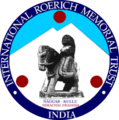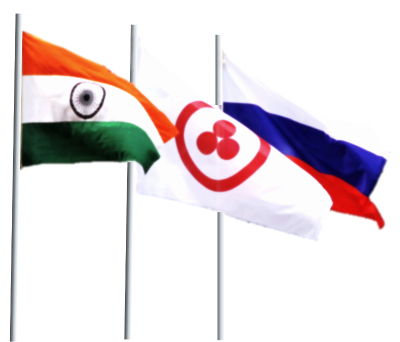The Banner of Peace
The Banner of Peace suggested by Nicholas Roerich features three small red spheres embraced by a big circle, symbolizing the unity of the past, present and future in Eternity, or the synthesis of art, science and religion within the circle of Culture.
The sign on the Banner of Peace, the Trinity, is one of the most ancient symbols of humanity. It was not by accident that Nicholas Roerich chose it. As a result of multiple archaeological diggings in various regions of the planet, during which the artist studied monuments of art of different epochs and peoples, he discovered that this sign penetrated the history and culture of many nations.
As Roerich writes in the essay “Banner of Peace”, “Chintamani – the most ancient idea of the ecumenical happiness – bears the same symbol. In China, in Temple of the Sky, you will find the same image. The “Three Treasures” of Tibet talk about the same thing. One can see the same symbol on Christ's chest in the renowned painting by Memling. The same has been depicted on the Madonna of Strasbourg. It is on the shields of the crusaders and the coat of arms of the Templars. The famous Caucasian swords – the gurdaa – bear the same symbol. Cannot we detect it also on philosophical symbols? It is on the images of Kesar-khan and Rigden-Dzhapo. It also is on Tamerlan`s Tamgaa. It existed on the Pope`s emblem. It can also be found on ancient canvases of Spain and on the paintings by Titian. You can find it on the ancient icon in Bari depicting St.Nicholas. The same is on the centuries-old image of St.Sergius. It is on the image of Holy Trinity. <...> It is on Buddhist banners. Going back to the Neolithic depths, we can find the same sign in the ornaments decorating their pottery. And that is why the symbol was chose for the all-uniting Banner as the symbol that has passed through centuries, more exactly – millennia.”
The symbol of the Banner of Peace never implied adherence to any particular nation or religion. “This international flag for the protection of beauty and science would not in any way demean any interests or lead to misunderstandings,” Nicholas Roerich claimed. “On the contrary, it elevates the universal understanding of evolutionary discoveries, as though new human values had been created and we were moving on to a path of progress and peace.”
Chintamani.
Nicholas Roerich. 1935-1936
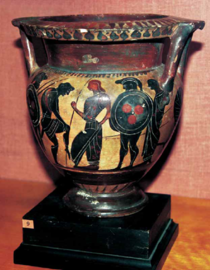


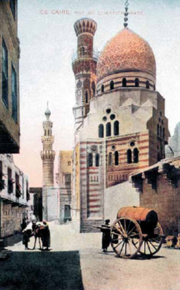

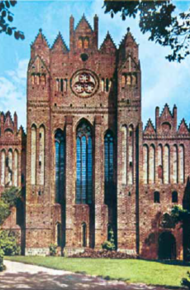
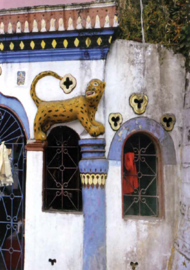
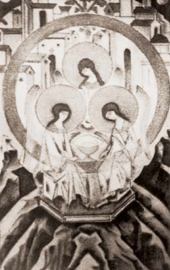
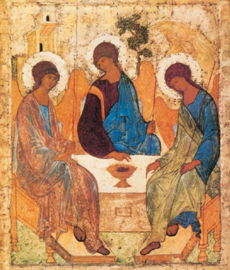

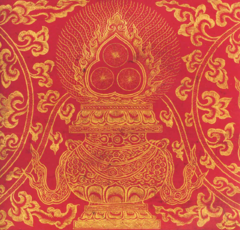

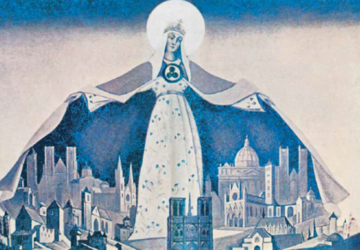
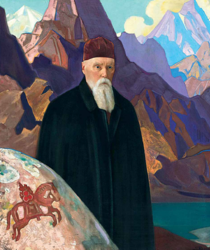
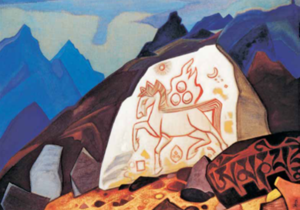
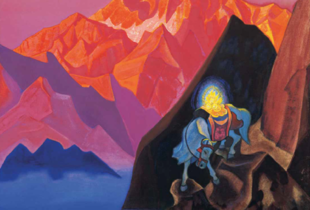
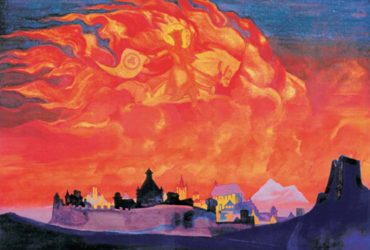
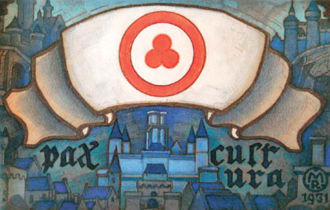
The Banner of Peace “Pax Cultura”.
Nicholas Roerich. 1931
White Stone
(Sign of Cintamani or Horse of Happiness).
Nicholas Roerich. 1933
The Western Façade of the Cistercian Church.
Sborin, Germany.
13th century
Refectory Church of Our Savior and St. Euthymius monastery in Suzdal.
17th century
Mosque. Cairo
Church. Belgium
Chapel of St. Bernard. Austria. 6th-7th centuries
Nicholas Roerich. The Sign of Trinity.
1932
Andrey Rublev. The Trinity.
1420
Black-figure crater. Ancient Greece.
400 B.C.
Fragment of a temple. Darjeeling, India
Buddhist Temple. South Korea
Triratna (Three Jewels).
Embroidery. Mongolia.
19th century
Hans Memling. Christ and Angels Adoring God.
1475
Sophia – the Wisdom of the Almighty
(Banner of Peace).
Nicholas Roerich. 1932
Portrait of
Professor N. Roerich.
Svetoslav Roerich. 1939
Madonna Protectrix.
Nicholas Roerich. 1933
